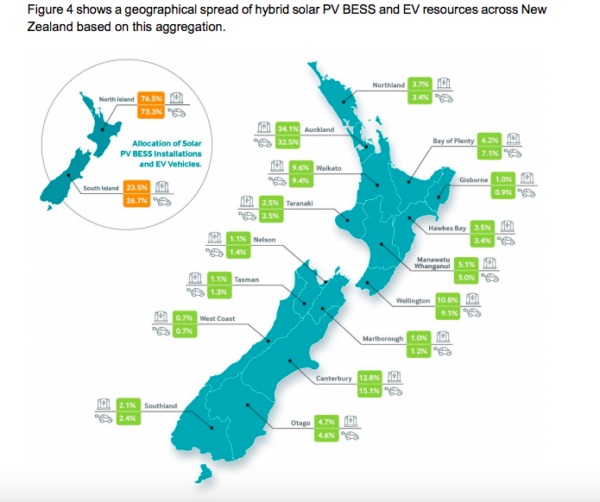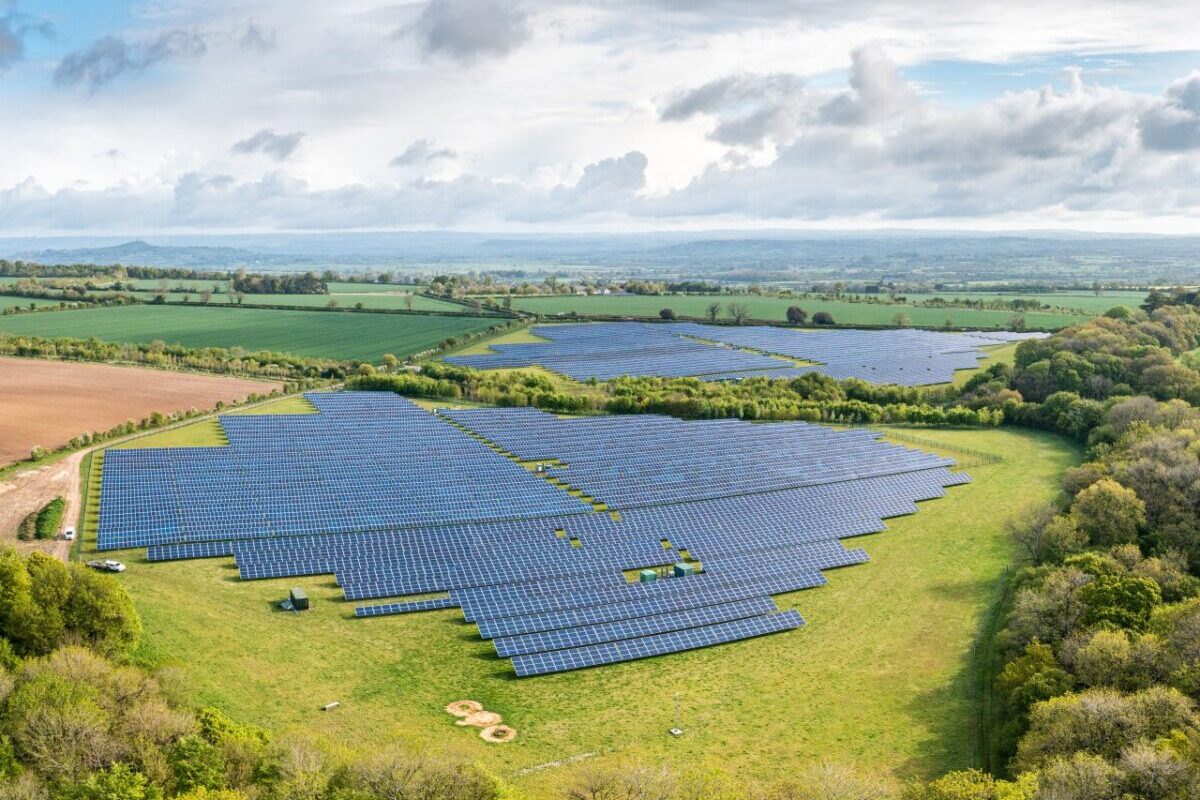The growing uptake of rooftop PV and electric vehicles has seen New Zealand’s Transpower preparing for challenges in terms of voltage and frequency management. In a recent report, the state-owned transmission grid operator analyses the operational impact of the widespread uptake of distributed storage and finds advances in battery technology could play an important role in ensuring the power system security and reliability.
While the nation already uses renewable energy for almost 90% of its electricity demand, according to live transmission data on Transpower’s website, PV is not even listed among the clean energy technologies in operation. It accounts for less than 1% of the nation’s energy mix with around 97 MW of installed capacity. Residential solar accounts for the lion’s share with 80 MW, almost half of which has been installed over the last two years, according to the NZ Electricity Authority’s data.
As the NZ energy system transitions towards higher electrification, more capacity will be needed and cheap solar is among the top contenders. In a report released earlier this year, Transpower identified 11 GW potential for residential solar, and warned solar installations without storage would amplify demand spikes in the early evening hours.
In a study released in 2017, the grid operator found that the NZ power system could enable up to 2 GW of solar PV generation with minimal impact, but that 4 GW would pose a challenge in terms of both voltage and frequency management. Its latest findings suggest the addition of distributed batteries can help address this issue, especially if the systems are large enough to be able to charge up in the middle of the day.
The Distributed Battery Energy Storage Systems in New Zealand report finds behind-the-meter batteries could improve the operator’s use of the grid and generation by smoothing the daily load profile and deferring investment in grid upgrades. On top of that, the large-scale distribution of BESS could help manage power system under-frequency events and replace the system inertia lost when large conventional generators are displaced.
In order to tap this potential, NZ has already taken major steps in orchestrating distributed battery storage into virtual power plants (VPPs). In December, Minister for Climate Change James Shaw launched what is touted as the world’s largest VPP. The system delivered by local company Solarcity as part of Transpower’s demand response program connects 3,000 residential solar-plus-storage systems which can collectively store 18 MWh.
The latest report also found NZ’s current power system could accommodate increases in system load associated with EV charging. A low uptake of 64,000 EVs would present no challenges to operation of the power system, and even 2 million EVs could be accommodated under most conditions. “Hypothetically, the charging of 2 million EVs in New Zealand at the end of the working day, without any incentive to defer charging to later in the evening, would add 25 per cent to today’s winter evening peak demand. This would require added transmission and peaking generation capacity, which we can work to avoid,” the report states.
Superior performance
Transpower General Manager Operations John Clarke said the report’s findings highlighted the importance of developing proper standards, codes and market arrangements to ensure the potential benefits of distributed battery storage are realized.
“The potential addition to the mix of significant EV charging requirements reinforces the need for market signals that enable coordination including from BESS installed in homes. This will manage the impacts of power flow across the grid and avoiding the need for costly network investment,” Clarke said. “In achieving this outcome, we’ll avoid the consequences of poorly managed integration seen in other power systems globally.”
With typically three to five major under-frequency events each year due to the sudden loss of a large generator or the HVDC link, Transpower’s studies of frequency performance with BESS demonstrated ‘superior performance’ compared to the reserves the grid operator relies on today, reducing the impacts on consumers.
However, the study also found BESS could also assist, but not fully resolve, system voltage management issues created by solar PV injecting into the grid, especially in the middle of the day. “We’ll do further work on regional voltage impacts with different assumptions on BESS and include the impact of EV charging in these studies,” Clarke said.
According to the Sustainable Energy Association New Zealand, one PV system is installed in the country every 25 minutes. Around 30% of New Zealand households with a solar system have battery storage up from 24% in 2017 and 16% in 2016.

This content is protected by copyright and may not be reused. If you want to cooperate with us and would like to reuse some of our content, please contact: editors@pv-magazine.com.









By submitting this form you agree to pv magazine using your data for the purposes of publishing your comment.
Your personal data will only be disclosed or otherwise transmitted to third parties for the purposes of spam filtering or if this is necessary for technical maintenance of the website. Any other transfer to third parties will not take place unless this is justified on the basis of applicable data protection regulations or if pv magazine is legally obliged to do so.
You may revoke this consent at any time with effect for the future, in which case your personal data will be deleted immediately. Otherwise, your data will be deleted if pv magazine has processed your request or the purpose of data storage is fulfilled.
Further information on data privacy can be found in our Data Protection Policy.